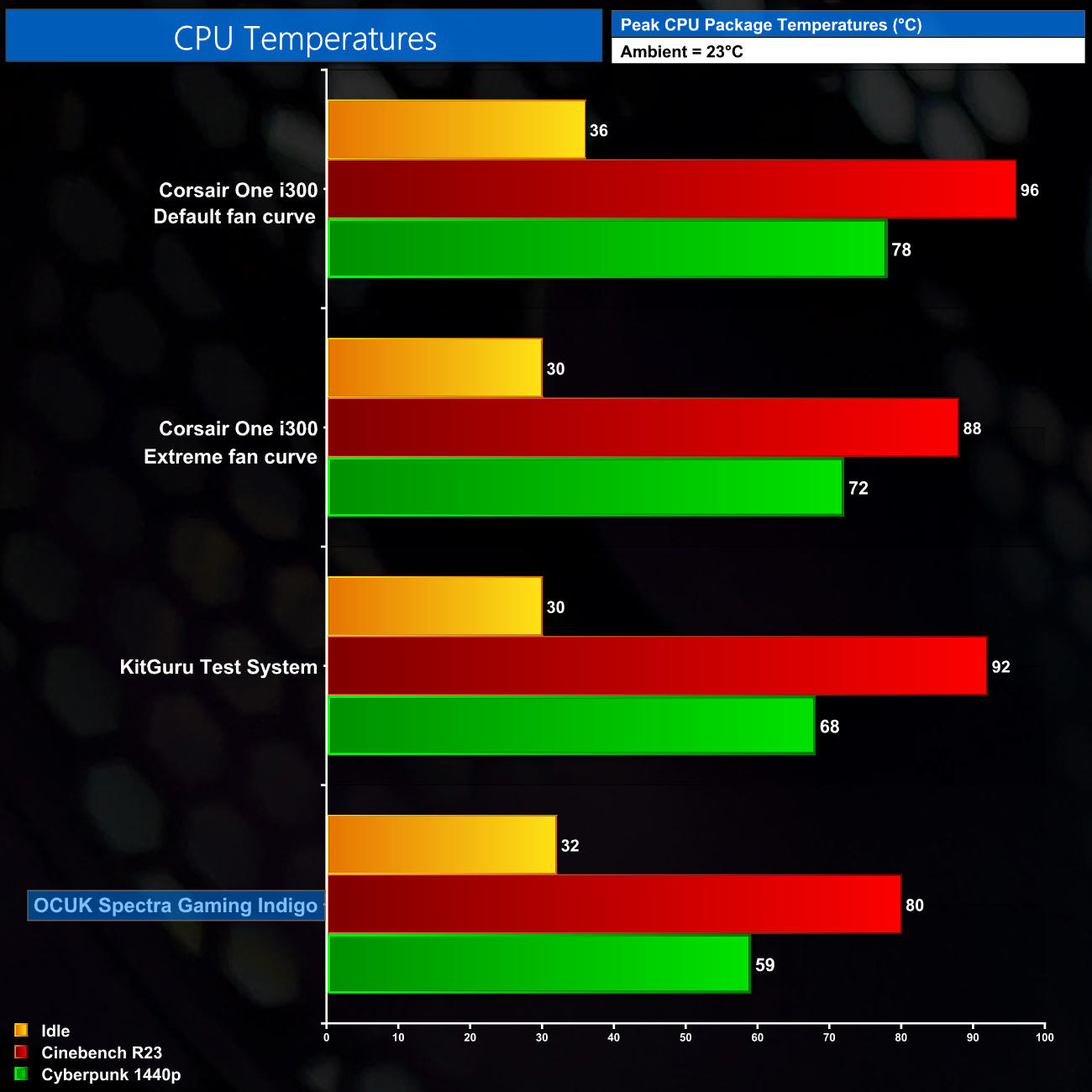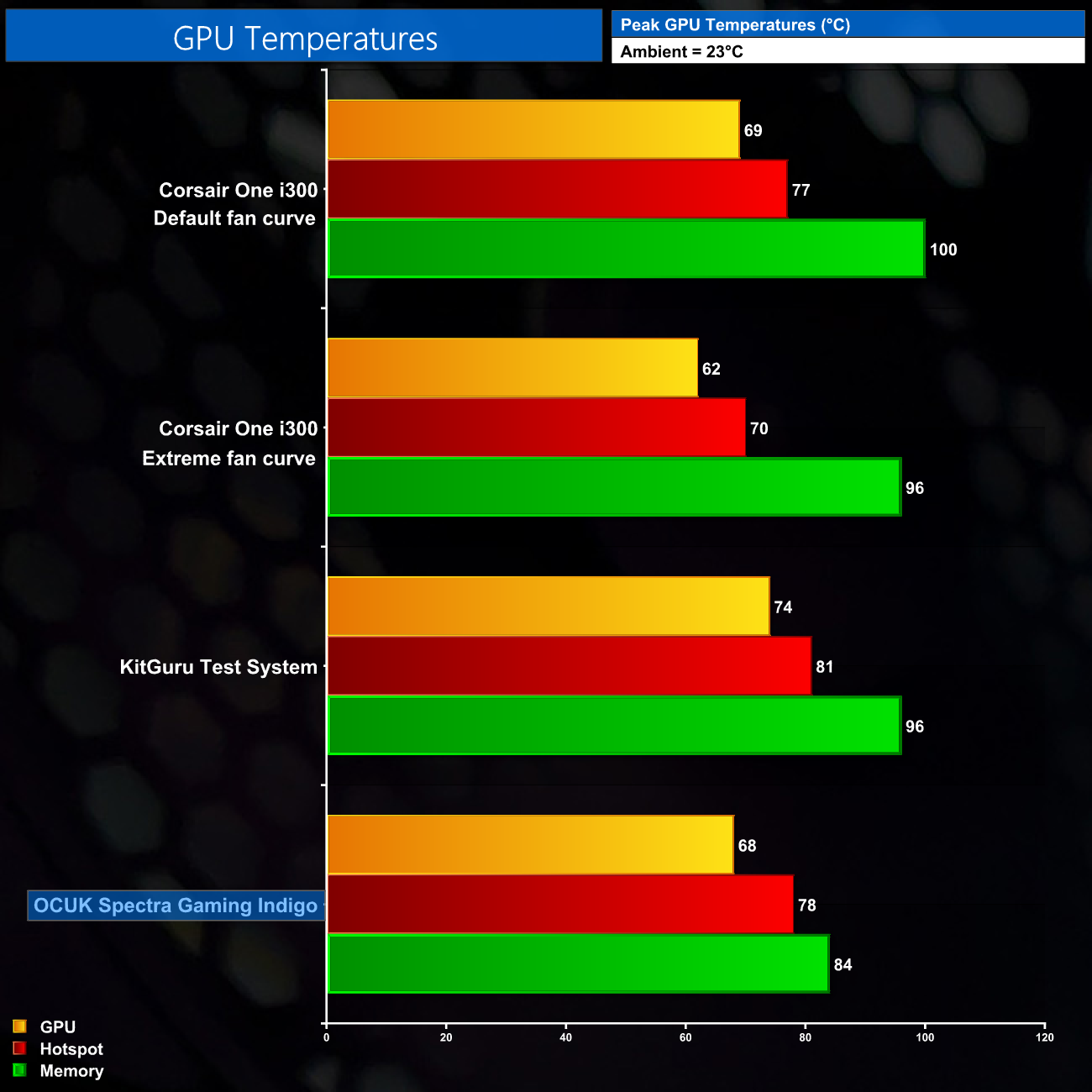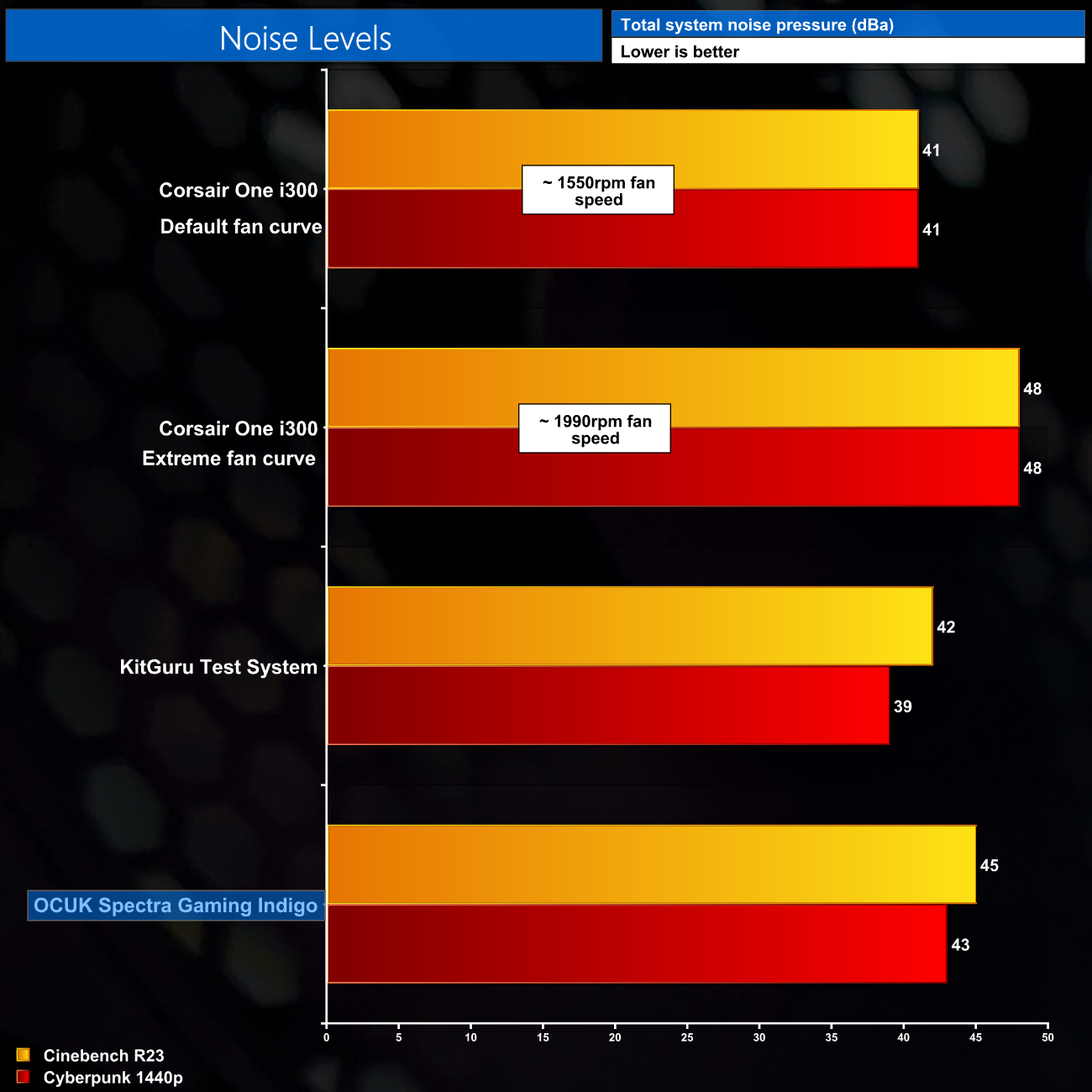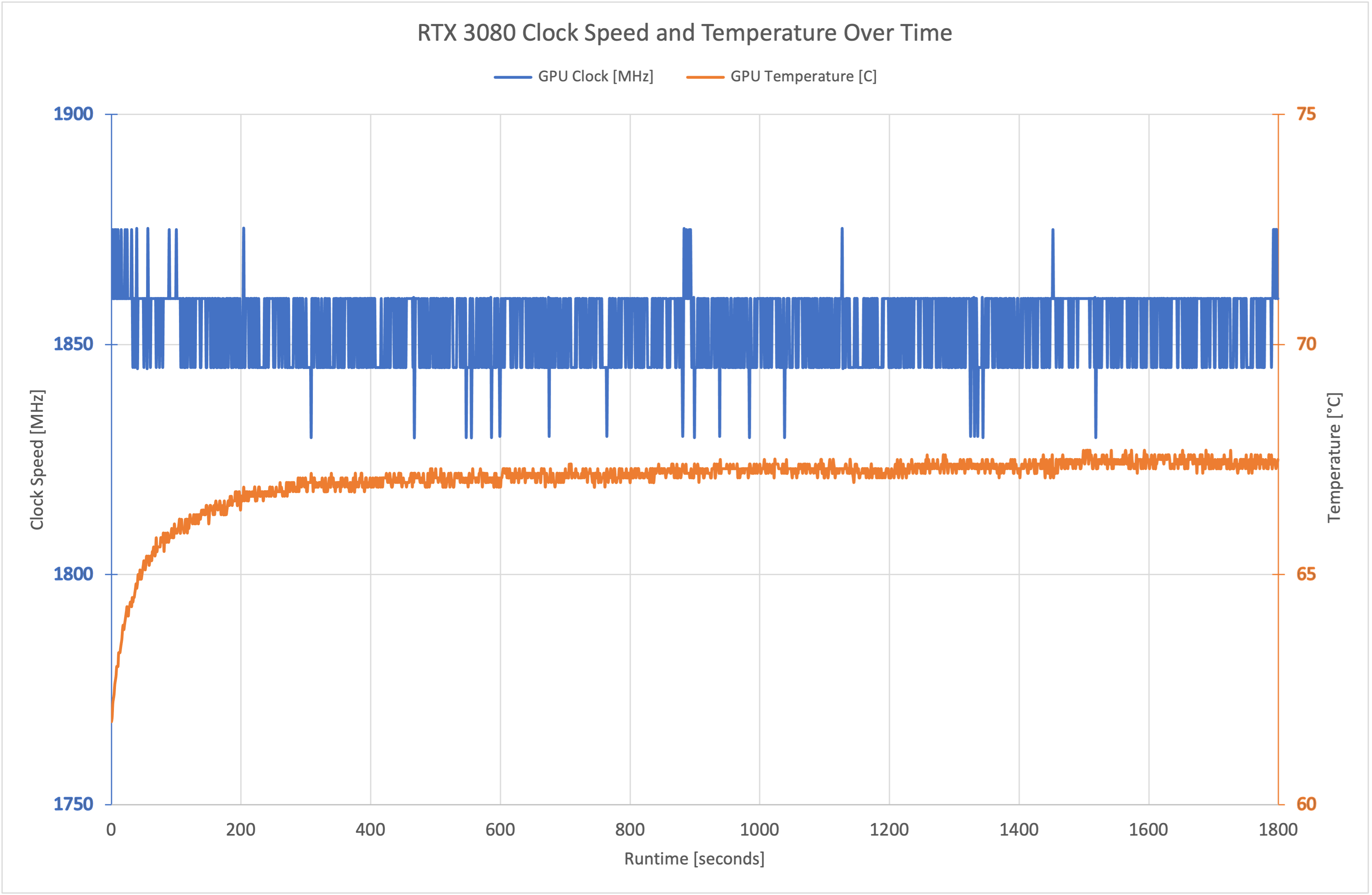As for thermals, starting with the CPU we can see excellent results across the board. The fact the motherboard can hit 4.9GHz at 200W, coupled with the 360mm AIO, keeps CPU thermals very healthy indeed, staying below 60C while gaming.
The GPU also does very well, hitting a hotspot of 78C during a 30-minute stress test in Cyberpunk 2077. The 84C reading for the GDDR6X is also impressive and is significantly lower than what our own Test System, and the Corsair One i300, were able to achieve.
These thermal results do come at a slight cost of higher noise levels however, with the system hitting 43dBa when gaming, measured from 30cm away. It’s hardly loud, and would easily be drowned out by decent speakers or a headset, but we have tested quieter machines in the past.
As for power draw, we see very similar results when gaming to the KitGuru test system, with about 550W being sucked down at the wall, which means we’re at about 65% load on the PSU, ensuring the efficiency will be as good as it can be for an 80 Plus Bronze unit.
During Cinebench, however, the total system power draw is significantly lower than the KitGuru Test System, as a result of the motherboard being less aggressive with the CPU power delivery for the Indigo.
Lastly, above we can see a chart plotting both the temperature and clock speed of the RTX 3080. Its clock speed is very consistent, as is the temperature, and over the 30-minute stress test the GPU averaged 1854MHz.
 KitGuru KitGuru.net – Tech News | Hardware News | Hardware Reviews | IOS | Mobile | Gaming | Graphics Cards
KitGuru KitGuru.net – Tech News | Hardware News | Hardware Reviews | IOS | Mobile | Gaming | Graphics Cards







